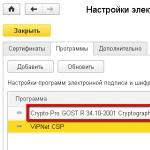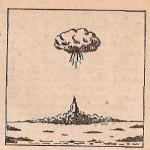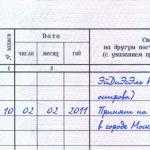An example of a business plan for the tax office. How to describe a business scheme for a bank. Business processes: examples and description
Small businesses are increasingly complaining about bankers, and there are more and more reports of banks blocking accounts and cases of service agreements being terminated without any justification, according to victims. However, in many cases, banks have good reasons. IN Lately The main postulate of the client policy of any bank - in accordance with the requirements of the Central Bank - has become the reality of the client's business. The signs of bad companies were formulated in Bank of Russia Regulation No. 18-MR dated July 21, 2017. What do banks do to make sure that the business is real?
1. The bank studies the client’s transactions in order to identify signs that indicate the absence of a real business or the presence of tax optimization schemes. The signs are:
Payments of salaries to employees, as well as income tax transfers, are not made from the company account. individuals(NDFL) and insurance premiums; or the payments do not match average number the client’s employees and indicate an underestimation of real salaries;
The average accrued salary is below the official subsistence minimum;
There are no cash balances on the account or are insignificant compared to the volume of transactions usually carried out by the client on the account;
The basis for payments does not correspond to the declared type of activity (for example, the client indicates in the questionnaire that he is engaged in production bakery products, but receives money for transport or consulting services);
Funds are credited to the client's account for one reason and then debited for another. In other words, the client receives money mainly for, for example, Construction Materials, but pays mainly for transport and consulting services;
There is a sharp increase in turnover on the client’s account, the company noticeably exceeds the maximum cash turnover values stated when opening the account;
the client does not pay from the account for business needs: for example, for rent, public utilities, purchase of office supplies, etc.;
Buying counterparties pay the client under contracts for goods and services with the allocation of VAT, and then these amounts are almost completely written off by the client in favor of counterparties without VAT;
The criterion for paying taxes and other obligatory payments is violated (approximately 0.9% of the debit turnover on the client’s account or slightly more).
2. Then the bank studies the place of business and checks whether the company’s office is located at the place of its registration.
3. Next, the bank compares the volume of business with the size of office, warehouse and production premises, with the staff. For example, a company with operations worth hundreds of millions of rubles per year, which does not have a permanent office, warehouse or production facilities, and has only one director on staff, was created for the transit of cash flows.
4. Then the bank studies the structure of the enterprise. A truly operating enterprise must have staff accountant or an agreement with an accounting company.
5. The bank identifies the beneficiaries of the business. He checks the information provided by the client in the questionnaires and uses all available methods. In particular, if the client names a director as a beneficiary who is not actually the owner or co-owner, additional verification will follow. Are being studied open sources(press, internet) to identify information about the client, including negative information. Specialized databases (SPARK, Kontur-Focus, etc.) are also often used to verify the client.
6. If any questions arise, the bank holds a conversation with the company’s management.
Such a comprehensive study of the client requires time and money. Therefore, some banks, having identified at least one sign of a lack of real business in a client, prefer to refuse service to him without continuing further proceedings.
For clients, such a decision has the most negative consequences. Now they will not be able, as before, after being rejected by one bank, to open an account in another. All banks in Russia are now prohibited from working with such refuseniks. Therefore, if you are one of those with whom the bank terminated the service agreement, you must make every effort to prove the reality of the business. You can invite bank representatives to your office, show trading or industrial premises, warehouses, products. You need to submit contracts to the bank that confirm the economic activity, acts of acceptance of works and services, current rental agreements for premises. Provide the bank with a list of counterparties and links to their websites. Provide a description of your company's ownership structure and information about the actual owners of the business. If you have accounts in other banks, they can help letters of recommendation from them. And of course, you should be careful when choosing contractors - work only with reliable companies.
Be constructive when bank representatives try to understand your activities. If you have real business, you have nothing to hide from the bank.
They share with each other their experience of drawing up explanatory statements addressed to a bank that suspected the company of violating the “anti-money laundering law” 115-FZ.
As a rule, the bank asks to provide explanations explaining the economic meaning of operations, the reasons and necessity of making payments, what forces and means are used to ensure the organization’s activities, and to describe the business plan.
Colleagues offer their options.
Romashka LLC (hereinafter referred to as the Company) carries out activities such as hilling flower beds, weaving wreaths and selling ready-made bouquets.
In order to carry out the above activities, the Company purchases ribbons and flowers, and the Company leases hoes and rakes. The main suppliers of the Company are: Pion LLC, Lenta LLC, Hoes and Rakes LLC, IP Zemelkin. Calculations are made within the framework of concluded contracts on the basis of received invoices for payment.
The company rents warehouse and office space at the address:.... according to the agreement with the LLC or individual entrepreneur.
Today the Company has 1 employee. Due to the fact that the Company’s activities are seasonal, GPC agreements are concluded to perform specific volumes of work. Payments for completed work are made in cash from the Company's cash desk (pay slips and cash settlements are attached)
Taxes and contributions have been paid in full and on time. Reporting is submitted in a timely manner in full.
In response to your request for clarification economic sense transactions carried out on the current account of an Individual Entrepreneur, I report the following.
Main focus economic activity IP xxx is wholesale products OKVED food 46.17. Buyers are enterprises Catering.
Revenue is generated when payments are received from customers.
Profit is formed as the difference between revenue and procurement costs, transportation and other expenses.
Individual entrepreneur xxx finds contractors as a result of business relationships.
Third parties are not involved in the work; there are no hired employees.
Individual entrepreneur xxx owns a motor vehicle - Hyundai porter II state. number xxx
Website link: http://xxx
IP xxx is registered in the Rosselkhoznadzor Mercury system.
Individual entrepreneur xxx from the moment of registration - xxx.2018 - is on a simplified taxation system. The deadline for fulfilling tax obligations will be October 25, 2018 in case of payment of an advance payment under the simplified tax system. The deadline for submitting a tax return under the simplified tax system is 04/30/2019. currently there are no grounds for paying taxes.
Individual Entrepreneur xxx, in addition to a current account with PJSC Sberbank, has a current account with JSC TINKOFF BANK and the CENTRAL BRANCH of VTB BANK (PJSC).
IP xxx is not part of the group of companies and is not an affiliate.
The main contractors (buyers) of individual entrepreneurs xxx are legal entities. All payments under supply contracts are made by bank transfer. The purchase of goods is carried out mainly in cash at OPC FOOD CITY. In this regard, IP xxx withdraws cash from the current account.
The main counterparties (buyers) are public catering enterprises; supply agreements have been concluded with them:
LLC, INN, Agreement No.IP xxx. transfers funds to accounts of individuals that are personal funds individual entrepreneur
The main assets of IP xxx are accounts receivable from customers and auto vehicle— Hyundai porter II state. number xxx
Individual entrepreneur xxx uses his current account with PJSC SBERBANK according to direct purpose- to carry out their economic activities, guided in their work by the Civil Code of the Russian Federation (part two) dated January 26, 1996 N 14-FZ (as amended on May 23, 2016), Federal law No. 209-FZ dated July 24, 2007 and others Legislative acts. The economic meaning of transactions carried out on the account is mutual settlements with counterparties, development and the economic growth, as well as making profit from business activities. Operations carried out by individual entrepreneur xxx do not carry the risk of loss of business reputation for your bank, are carried out exclusively for legal purposes, and are in no way related to the financing of terrorism and other illegal activities.Attachments to the letter: Contracts with buyers, appendices to contracts, documents for a vehicle, bank statements, documents for cash expenses.
The business process diagram reflects its essence and operating mechanism. Creating a diagram in itself is not very difficult. It is enough to understand what questions the diagram should answer, and then adhere to the creation algorithm. If you can't wait to start creating models or don't know where to start, this article is for you.
I would like to remind you that before starting to describe business processes, it is necessary. companies - the platform from which you need to start.
The algorithm that I present here will be useful to those who are just planning to describe business processes. For those who have been trained by me, the article will be an excellent review of what has been learned))))
Business process diagram - instructions for the impatient
1 – Set process boundaries
Every business process begins and ends with an event. The first thing to do is to designate the start and end events.
2 – Draw the main blocks of the process
Arrange the main blocks (subprocesses, operations) in the order in which they are performed.

Don't complicate the diagram at this stage. Display the blocks as if the process is running perfectly.
3 – Add forks and other events
Now it's time to make things a little more complicated. Add the main options for the development of the process and the main intermediate events. Complete the diagram with the missing operations.

4 – Designate the roles of the participants in the process
There are no positions or specific employees in business processes. Instead, the concept of “role” is used. One employee can perform many roles. Many employees can perform one role. A position is made up of a set of roles.

Add missing operations as necessary.
5 – Place documents on the diagram
A document is not necessarily an official paper with seven signatures. From the point of view of business process management, a document is information on any information medium. Email, report, presentation, SMS - all these are documents.

Sometimes it is necessary to display intermediate products. These are blanks, semi-finished products, or simply important parts of work that move from one process block to another. Add them at this stage. Of necessity.
6 – Add the programs and databases you use
The process should reflect what programs and databases it uses.

7 – Organize tools and materials
If tools and/or materials are used in the process, this must also be shown. The main points can be indicated on a business process diagram. It is better to give a detailed description in the comments and special sections of the description. Great option– draw up a diagram focused specifically on the use of tools and materials. In such a scheme, the emphasis is not on the flow of work, but on how, in what quantity and what materials are used in the business process.
8 – Define performance indicators in the business process
Place on the business process diagram the performance indicators that are taken into account in one way or another in the system.

9 – Link the resulting diagram to other processes
Each business process is only part of a larger system. All processes are interconnected. Essentially, a communication is something that a process exchanges with other processes. Note that you must specify the processes that the current process is associated with, as well as what they are exchanging.
 Relationship of a business process with other processes
Relationship of a business process with other processes 10 – Check the resulting business process model
In principle, the scheme is ready. The business process diagram should answer the following questions:
- Where does the business process begin and end?
- What processes is it associated with? What is being exchanged?
- What operations are performed? In what order?
- Who performs the operations in the process?
- What documents are used and appear in the process? In what transactions are these documents used/appearing?
- What tools, materials, software and databases are used in the process and in what operations?
- What performance indicators and where exactly are they recorded in the business process?
A well-prepared diagram should be easy to understand and sufficiently informative.
The business process diagram should be understandable to the “man on the street.”
The business process diagram at the description stage should reflect how the process is performed in real life.
This algorithm will allow you to quite simply and quickly describe necessary business processes. Next, I will talk in detail about the description of business processes. Stay in touch.






